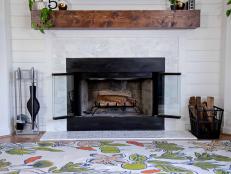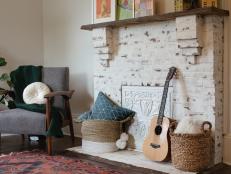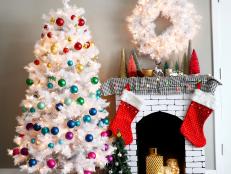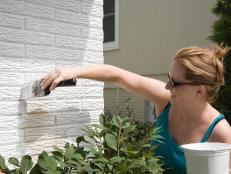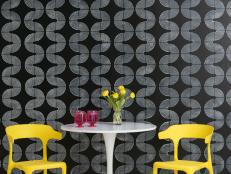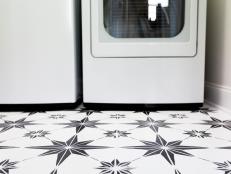How to Paint a Brick Fireplace White
If your brick fireplace is looking dated or has stains and discoloration, it’s time to freshen it up with a quick coat of paint. It’s an easier job than it sounds, and we’re here to show you how it’s done.


You can paint a brick fireplace in a single weekend with a little bit of preparation and some effort. It’s a good idea to lay down a drop cloth ahead of time and to tape off any areas that will not receive paint. You’re also going to want to have a shop vacuum handy to help keep your work area clean and to keep the dust to a minimum.
Cleaning the Surface
Getting a good coat of paint on your brick fireplace is really dependent on getting the surface clean and free from loose debris and dust. Using a stiff wire brush, aggressively scrub the entire surface of your fireplace from the brick face to the grout lines. Next, go over the entire fireplace surround with your shop vac to suck up any loose dust or debris that stuck around during your brushing session. Finish your cleaning job by taking a damp sponge or brush over the surface of the fireplace to pick up any leftover dust or particles.
Priming the Bricks and Grout
Regular household paint does not stick well to bricks or stone, so you’ll need to start off with a primer that’s made for concrete and brick surfaces. Start by painting over the grout lines, outer edges of the bricks and anywhere else your paint roller won’t be able to reach. Once you’ve got your grout lines and edges painted, take a roller designed for rough surfaces and roll the primer over the remaining exposed surfaces. Primer that's designed for these types of surfaces is often very thick and incredibly sticky, so make sure to have some mineral spirits handy so you can quickly clean spills and mistakes.
Depending on how porous your particular surface is, you may have to apply a second or even a third coat. Allow your primer coat to cure for a full 24 hours between coats. Once you can no longer see the color of the bricks/grout, you’re ready for your first coat of paint.
Painting Your Bricks
If you’re painting your fireplace white, you might be tempted to just leave the exposed primer coat. After all, it's white, isn’t it? While that statement is true, primer’s main purpose is to bond and cover porous surfaces so that a topical coat of paint has something to adhere to. Paint then acts as the surface protection as well as the aesthetic finish, and without it, your primer is likely to deteriorate rapidly.
So once your primer is totally dry, you’ll want to put at least one coat of interior acrylic enamel on your fireplace. Remember that your fireplace is likely to be subject to room traffic and to temperature shifts, so it’s important to pick a durable finish that won’t yellow and that’s easy to clean. As before, start by brushing in your grout lines and edges, and then finish off the remaining areas with a roller. Let your paint fully cure for the recommended period of time before you light or decorate your fireplace. You’ll want to make sure everything is fully bonded to the bricks before lighting your fireplace to use.






